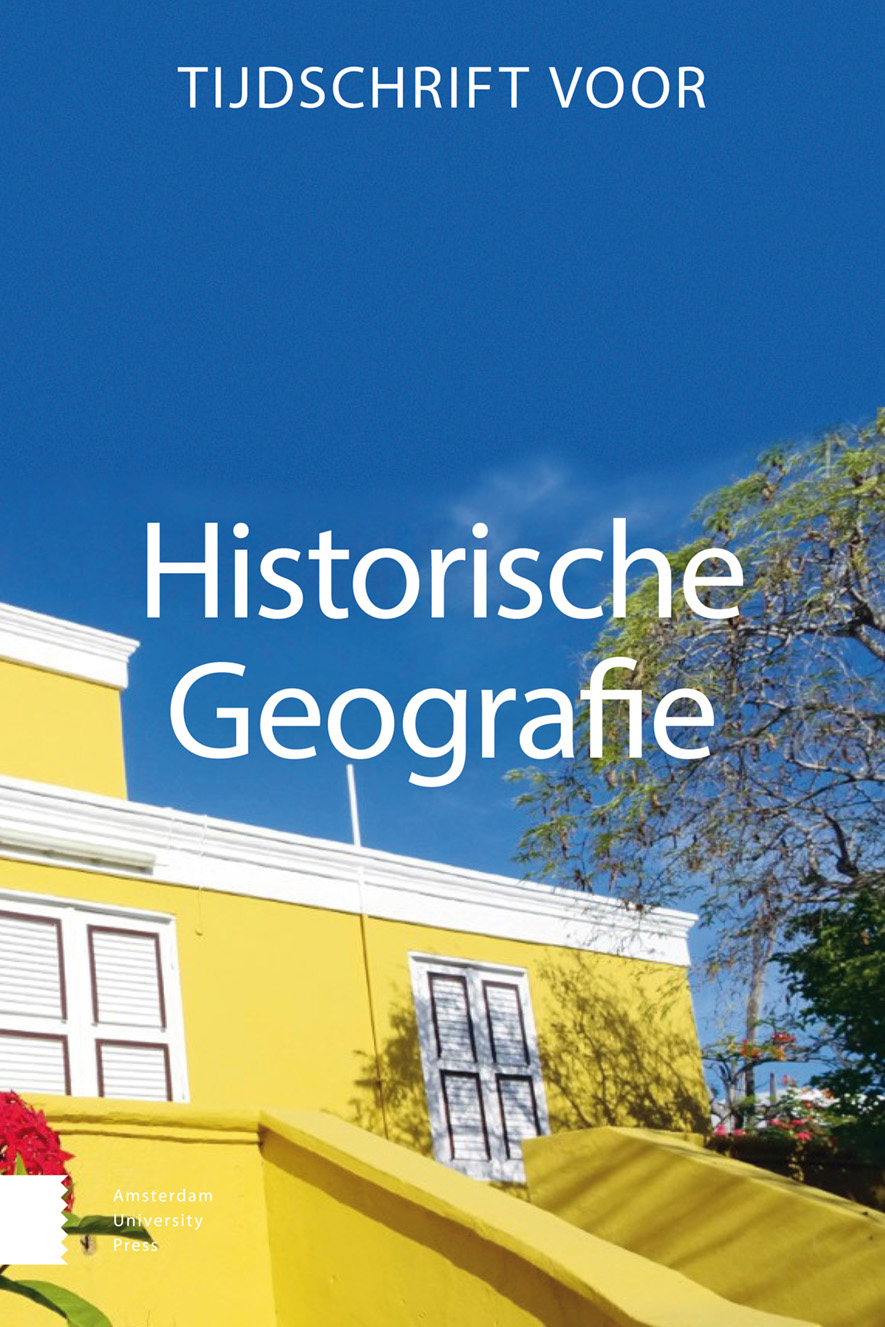- Home
- A-Z Publications
- Tijdschrift voor Historische Geografie
- Previous Issues
- Volume 4, Issue 2, 2019
Tijdschrift voor Historische Geografie - Volume 4, Issue 2, 2019
Volume 4, Issue 2, 2019
-
-
De watervoorziening op de zandgronden
More LessAuthor: BERT GROENEWOUDTWater supply in the sandy dry lands (the Netherlands). Spatio-temporal developmentsWells as water facilities were standard elements of the Dutch settlement landscape only since the Roman period. At the same time (drinking) water facilities became largely detached from the local topography. The position of a well within a settlement became determined by that of its associated house, and its position relative to the house became more or less fixed. This reflects the functional and social subdivision of the farmhouse into two distinct sections: ‘front’ and ‘back’. Communal water facilities (socially important as well) seem to have been associated with nucleated settlement, and they always existed alongside private facilities. Communal (public) wells first appeared in towns around the 13th or 14th century, but in rural areas probably not until the 16th century. In different periods there is evidence for the expression of social and functional differentiation.
-
-
-
Het Wassende Water
More LessAuthor: JOHAN TETERRising water. Deserted settlements in Holland after 1514The abandonment of villages in Northwestern Europe between 1200 and 1400 AD is a much-studied subject. Little is known about the presence of this phenomenon after 1500 AD. In the historic County of Holland (more or less the western part of the Netherlands) evaluation of an old taxation document from 1514 showed that 7,5% of the villages and 15% of the hamlets present in 1514 had disappeared by 2018. Main reason is the slowly rising North Sea. Another cause is the destructive peat industry, which caused a steady and dangerous enlargement of inland lakes. The research also showed that smaller and economically weaker settlements have a higher chance to be left deserted. Cities, and traditional agricultural villages not close to the sea or big lakes, were practically immune to permanent abandonment in the last 500 years.
-
-
-
Grote trap en kraanvogel als historische broedvogel in Nederland
More LessAuthor: JAN DE RIJKGreat bustard Otis tarda and common crane Grus grus as historic breeding bird in The NetherlandsFor extinct breeding birds it is often difficult to establish when and why they got extinct. This can be done by comparing the pattern of extinction for different bird species. In this article great bustard and common crane are compared. They became extinct as a breeding bird in the same period and both stayed irregular dwellers in the centuries afterwards. For common crane archeozoological findings suggest they were widespread and common in the Netherlands until 1000 AD. Written sources on hunting from the 14th till 19th century show they were present in different parts of the country. But they were not common anymore. Several of these sources involve breeding birds. In western and southern parts of the Netherlands they became extinct as breeding birds from the 14th till the beginning of the 17th century. In eastern and northern parts they could survive longer as breeding birds. Possibly, in the province of Drenthe this was until the beginning of the 18th century. For great bustard archeozoological findings suggest they were scarce or absent until 1000 AD. Written sources on hunting from the 16th century on show they were present in the western part of the country. Some of these sources describe their status as breeding bird. The sources suggest they became extinct as breeding bird around 1600. Changing landscapes are for both species the main driver of their extinction. Their breeding habitats disappeared by reclamation, intensification of land use and a growing human population. One of the underlying factors was the economic upheaval of the Golden Age (1588-1702). The prosperity made big investments for reclamation possible. Both species were hunting bird and were protected by hunting laws. During the Dutch revolt (1568-1648) these laws could not always be enforced. Lack of protection could be an additional factor in their extinction. The presence of great bustard shows a relation to the Medieval Warm Period. The successive Little Ice Age, starting in the 16th century, may have been a factor in their disappearance.
-
-
-
Juinen in kaart gebracht
More LessAuthors: JOHN STEEGH & HANS RENESThe map of Juinen by Arthur SteeghIn 1984, the historical-geographer Arthur Steegh (1946-2005) drew a fictive map that included most landscape types of the Netherlands. The map could be used to simulate the effects of planning procedures on landscapes and was part of a report on the use of landscape data in Environmental Impact Assessments. Steegh situated his map in the municipality of Juinen, which was the – again fictive – location for a popular satirical programme on Dutch television.
-
Most Read This Month


